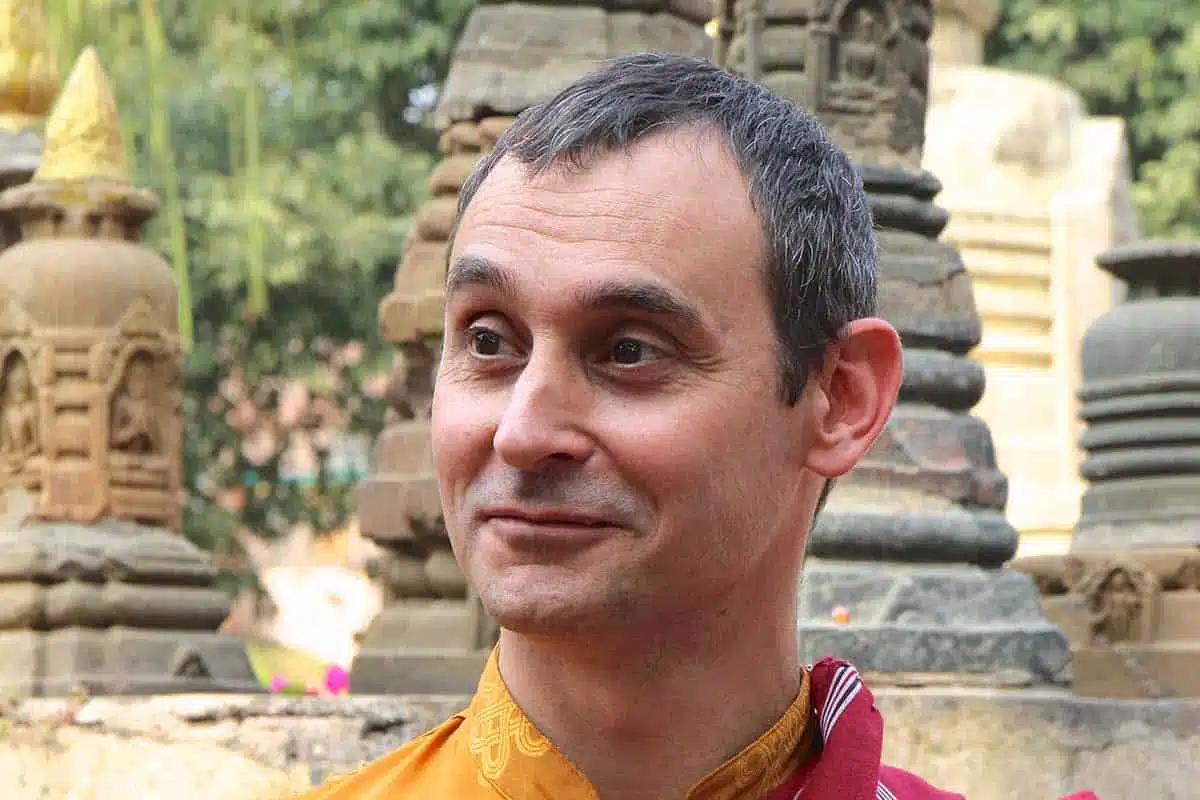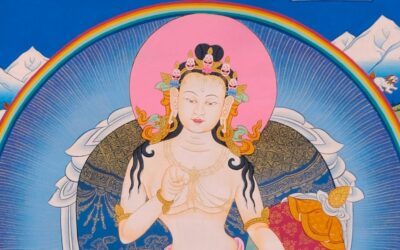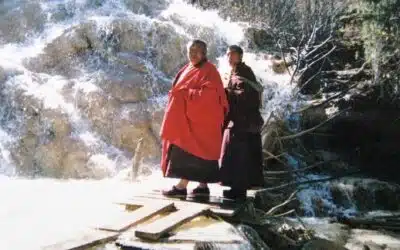(False) Start

Written By Mila Khyentse
Blog | The Dzogchen Journey
In (False) Start, Mila Khyentse talks about the two types of path for the Dzogchen tradition and the two legs needed to “walk” them.
Series: The Dzogchen Path
(False) Start
In the recent Dzogchen tradition, there are two possible beginnings: starting or finishing.
If we take the earliest Dzogchen tradition, what we might call the radical Dzogchen or ancient Dzogchen of the early Vidyadharas, there is no beginning and no path: it is a path of immediate accomplishment. It corresponds to beings who have reached a certain spiritual maturity, and who have therefore previously traveled a path of preparation in one form or another, often for a very long time (in the Dzogchen and Buddhist traditions, this can be counted in eons – a very long time indeed!). The characteristic of this (non-)path is that it is followed by beings of enlightenment (Bodhisattvas) who have realized that there is no real path and can therefore follow the path of Great Perfection. A path of immediate accomplishment takes place in the moment, and is not seen as a progression towards the Great Perfection of all things. In this aspect of Dzogchen, the Great Perfection is here and now, and even if it doesn’t seem like it, it’s still there. This is the kind of vision that beings of enlightenment on this spiritual path can maintain. It’s also called the “path of emptiness”, because it’s what’s perceived at the Base of all the reality of life’s experiences and phenomena.
I know, we don’t understand a thing!
“We can now walk the path that is no path. And we realize that there never was a start, and so there never will be an end.”
So, for us poor souls who don’t have direct access to emptiness, there is an “easier” path (see also Vincent’s post on the subject), consecutive, with an illusory vision, path and result. This is the more recent, gradual Dzogchen, which can also be described as the “path of appearances”, where we use everything that happens in existence to realize that nothing is really real either in itself or by itself, that everything is empty of self-existence, and thus gradually arrive at the vision of emptiness at the Base. So, on this (illusory) path, we have a preliminary practice, then, when that is completed, a main practice which ends in a completion practice. The latter finally corresponds to the radical Dzogchen we’ve just been talking about.
It’s important to point out, however, that on either side, the path remains illusory, since it always ends up being abandoned in the end. So, for the Great Perfection, the most important thing is not and never has been the path, but the Base. What’s most important is how we begin the (illusory) path, a practice, an action, a thought, etc.; in other words, what supports us, motivates us, transcends us, enables us to face all the vicissitudes of existence and transform them into a path of realization. For the Great Perfection tradition, this can only be done with the purest and most primordial motivation: the desire to achieve Great Perfection for the ultimate benefit of all sentient beings. This is compassion.
The counterpart of primordial aspiration is primordial devotion. It is the pure and eternal link that connects us to the true Master, the Great Perfection of the Base, through its manifest forms, the luminosity of the mind and “its materialization”, the outer Master. Primordial aspiration and devotion are the two legs that enable us to walk this path that is not a path. They are the very strength of the path. Compassion and devotion don’t just appear out of the blue. We train ourselves to perceive them as they are, without error: neither submission, nor pretense, nor dependence, nor confusion. When the two primordial aspects come together naturally, we discover the true nature of Great Perfection in the Introduction to the Nature of Mind. We can now walk the path that is no path. And we realize that there never was a start, and so there never will be an end.
More Posts
The Story of the First Masters: Garab Dorje
“The Story of the First Masters: Garab Dorje” is the first article in a new category about the masters of the Dzogchen lineage.
A Garland of Light
In “A Garland of Light”, Johanne talks about the way the lineage of the Great Perfection is passed on, since its beginning.
Stories When the Light Fades
In “Stories When the Light Fades”, Mila Khyentse recalls some of his Master’s Jack-o’-lantern stories told at night.




